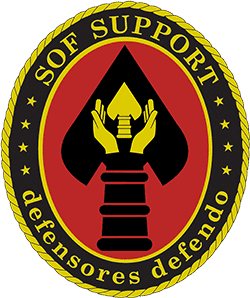FM 3-05 Army Special Operations (JUN25)
FM 3-05 provides U.S. Army planners and forces with the principles, tactics, and procedures to execute Army special operations and related activities.
Foreword
Since the days of the Revolutionary War, Army Special Operations Forces (ARSOF) have been persistently irregular in their approach. Our organizations have always provided outsized impact to the larger Army and Joint Force. While the adversaries, threats, and locations have changed, this impact has endured. However, we have not updated our doctrine since 2014. Now, as we face new threats and challenges, this doctrine will guide our transformation.
When we last updated our doctrine, ARSOF were in a generational fight against terrorism. During that time, we demonstrated our unique value to the Army and the Joint Force in the mountains of Afghanistan, the deserts of Iraq, and other austere and politically sensitive regions. We are now in a new generational fight, and it is time once again to transform our doctrine.
Our doctrine must describe how ARSOF contribute across the competition continuum—remaining threat informed, strategically driven, operationally focused, and tactically prepared. The character of warfare has changed and requires new tools and techniques to operate in all domains. Yet war’s nature endures; it ultimately changes human behavior—it is a contest of wills. Special operations remain an Army core competency because ARSOF enhance the ability of the Army and the Joint Force to gain, maintain, and exploit advantage—from competition through crisis and conflict.
ARSOF provide the backbone of joint SOF’s ability to conduct counterterrorism and crisis response missions vital to preserving policymakers’ decision space and defending the Nation. In competition, ARSOF conduct irregular warfare to ensure the Joint Force has placement, access, influence, and partners in regions vital to our national interests—enabling our Nation to prevent high-end conflict while setting conditions to prevail when and if it occurs.
In conflict, ARSOF operate in the strategic deep and denied areas and along the enemy’s strategic periphery to integrate effects between domains with joint, interagency, inter-governmental, and multinational partners. The SOF-Space-Cyber TRIAD enhances friendly, and degrades enemy, command and control, computing, communications, cyber, intelligence, surveillance, reconnaissance, and targeting capabilities (C5ISRT). ARSOF are the eyes, ears, and teeth of the Army in the strategic deep area during large-scale combat operations. We create dilemmas for the enemy where they are weakest. Our persistent presence and transgenerational relationships generate whole-of-society resilience, enable resistance forces in protracted conflict, and ensure the Joint Force retains and exploits information advantage.
LTG (ret.) Don Holder, a lead author of the 1982 and 1986 versions of FM 100-5 (AirLand Battle), ultimately fought as the covering force commander for Third Army’s main effort during the Persian Gulf War. Years later, he recalled the significance of that experience: “While writing doctrine, I had to deliberately think about the difference in the levels of war and what those meant for leadership and organization… [the experience] gave a good foundation for [higher-level] command.” I challenge all of you to do the same. Without equal! Sine Pari.

This publication is available at the Army Publishing Directorate site and the Central Army Registry Site.
Preface
FM 3-05 provides U.S. Army planners and forces with the principles, tactics, and procedures to execute Army special operations and related activities. Subordinate Army techniques publications describe specific special operations activities. Army special operations forces include all personnel assigned to the United States Army Special Operations Command (USASOC) and its subordinate units: 1st Special Forces Command, 75th Ranger Regiment, United States Army John F. Kennedy Special Warfare Center and School, and United States Army Special Operations Aviation Command.
Note. USASOC and all its subordinate elements are designated as airborne and special operations units. These unit designations are intentionally omitted in text to facilitate readability. Army special operations forces, as used throughout FM 3-05, refers to more than one type of unit present or conducting operations. When the discussion is about 1st Special Forces Command units conducting operations, it is referring to Civil Affairs, Psychological Operations, or Special Forces.
The principal audience for FM 3-05 is Army commanders and staffs working with or employing Army special operations forces. This manual provides the foundation for training and Army education system curricula and future capabilities development across doctrine, organization, training, materiel, leadership and education, personnel, facilities, and policy. This Service doctrine is consistent with joint doctrine.
Commanders, staffs, and subordinates ensure that their decisions and actions comply with applicable United States, international, and in some cases host-nation laws and regulations. Commanders at all levels ensure that their Service members operate in accordance with the law of armed conflict and the rules of engagement. (See FM 6-27 for legal compliance.)
FM 3-05 uses joint terms where applicable. Selected joint and Army terms and definitions appear in both the glossary and the text. Terms for which FM 3-05 is the proponent publication (the authority) are marked with an asterisk (*) in the glossary. When first defined in the text, terms for which FM 3-05 is the proponent publication are boldfaced and italicized, and definitions are boldfaced. When first defining other proponent definitions in the text, the term is italicized with the proponent publication designator and number at the end of the definition. Subsequent uses of the term are not italicized.
FM 3-05 applies to the Active Army, Army National Guard/Army National Guard of the United States, and United States Army Reserve unless otherwise stated.
The proponent of this publication is the United States Army John F. Kennedy Special Warfare Center and School, United States Army Special Operations Center of Excellence. The preparing agency is the Joint and Army Doctrine Integration Division; Directorate of Training, Doctrine, and Proponency; United States Army John F. Kennedy Special Warfare Center and School. Send comments and recommended changes on DA Form 2028 (Recommended Changes to Publications and Blank Forms) to Commander, United States Army John F. Kennedy Special Warfare Center and School, 3004 Ardennes Street, Stop A, Fort Bragg, NC 28310-9610.
